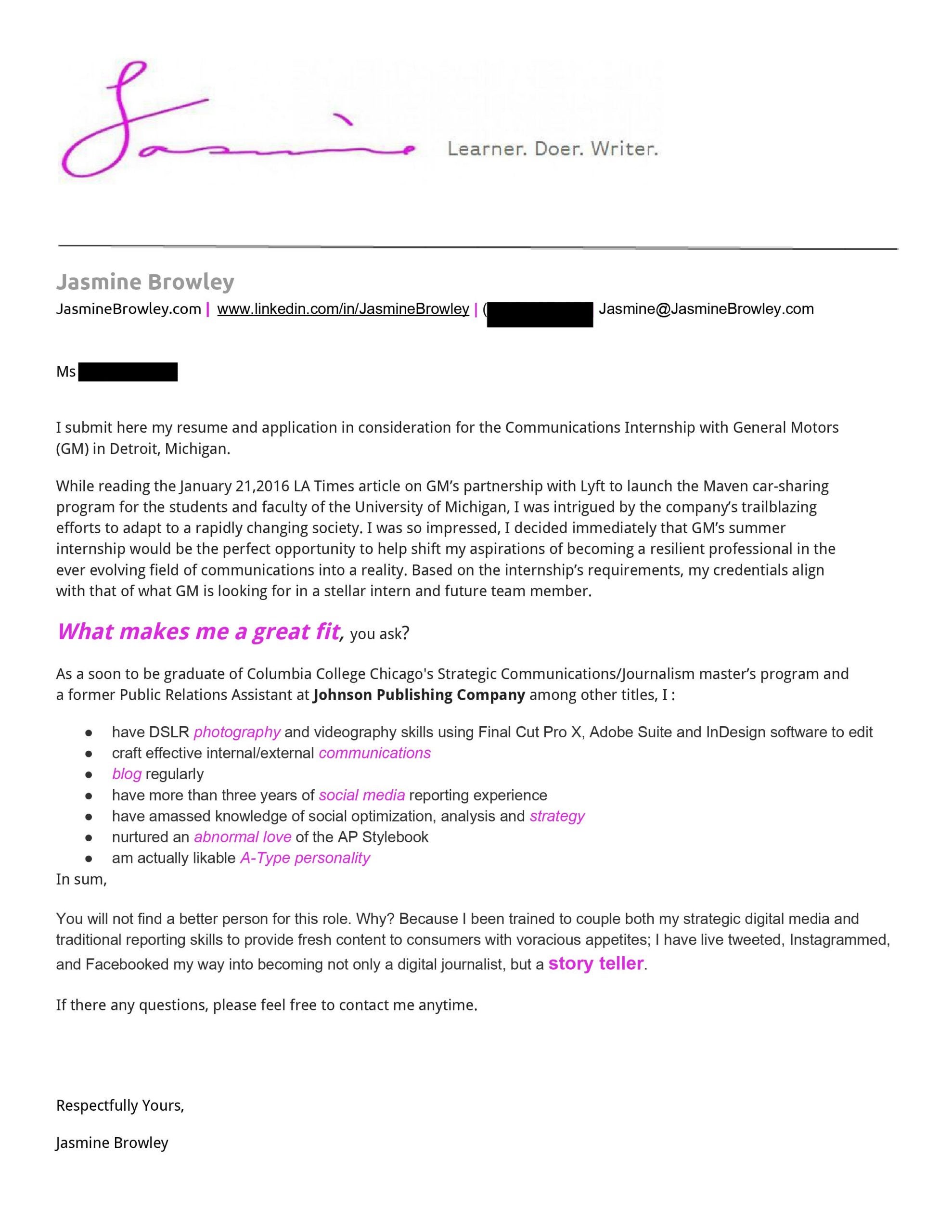
In a time when ChatGPT wasn’t yet known to the world, I wrote a cover letter that did exactly what it was supposed to: provided additional context for why I deserved the job I was applying for. And it ultimately landed me the gig.
It was 2016, and I really wanted a high-paying brand communication internship with General Motors as I rounded out my last year of journalism grad school. The requirements were simple. Submit a resume, job application, writing sample and…a cover letter. I’m not sure why that last ask was gave me pause but it was a daunting task to both sum up and expound on my resume, which is the purpose of a cover letter and essentially what you should aim to do when creating one. Since I knew the intern program was a coveted one and would likely garner scores of applications, I set out to ensure mine stood out with a few details: color, language and personality. Although cover letters may seem like they’re on the way to being obsolete, that’s not the case.
A recent survey of employers highlighted that the difference between getting the job you’re applying for and being overlooked lies in the cover letter. An impressive 87% of employers read cover letters.

Color
At the time, Girl Boss pink was the color of the moment, so I chose the tone to highlight the parts of the letter I wanted my prospective employer to pay attention to the most. Don’t be afraid to venture outside of the typical black font color when creating your cover letter, especially if you’re applying for a role in the creative industries like communications, marketing or graphic design.
Personality
I used thr opportunity to give them a preview of the type of person they would be working with: creative, outgoing and fun. I peppered in a few details about the type of skills I’d learned while in school and through other intern opportunities as well as how I’d already applied them. For example, I let them know that I was taught how to properly apply AP style writing, which was in alignment with my type A personality type. Don;t be afraid to inject some of yourself in the cover letter. After all, it’s likely that this will one of the first introductory documents the recruiter will look at of yours during the screening process.
Keep it specific and concise
Although the cover letter is a one-pager, you can utilize as a tool to let your recruiter know you’ve done your homework on the role and what it will likely entail from you. In my cover letter, I included information a partnership GM spearheaded, and what it’s aim was. It only took a quick Google search, but that detail was the differentiator that landed me the job I was later told by my recruiter.
The Closer
At the end of the cover letter, reinforce your reason for applying to the job and why you’d be perfect for it. Use the last few lines as an opportunity to really drive your point home and leave a lasting impression on those who read it.
Good luck!





